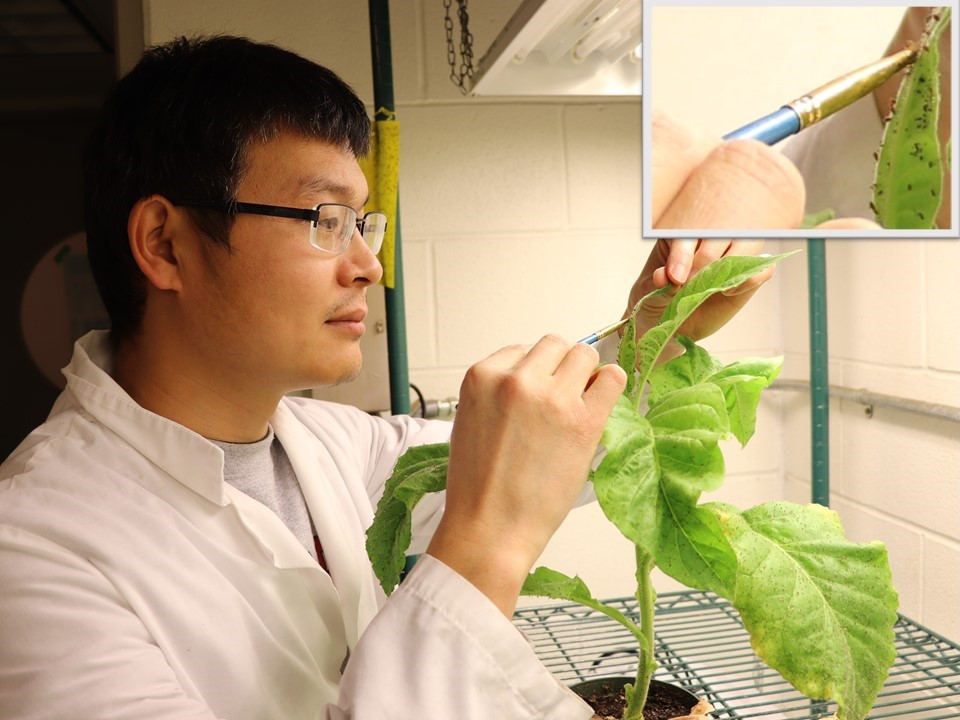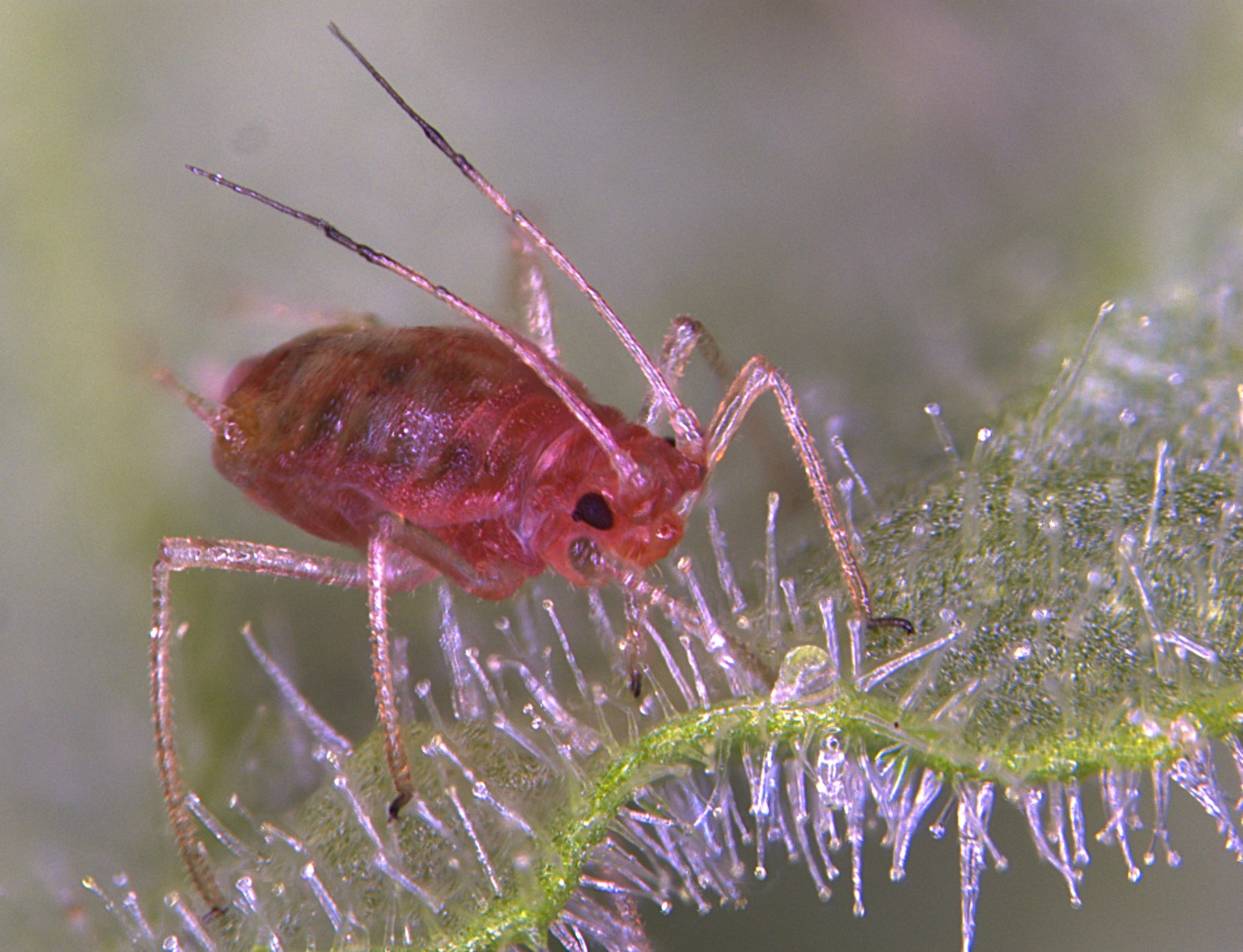News
Controlling insect pests by targeting genes acquired from other species

BTI’s Honglin Feng brushes some green peach aphids off of a tobacco plant. Inset: a closeup of the action. Image credit: Boyce Thompson Institute.
Killing crop-damaging insects by targeting genes essential to their survival is a promising approach to pest control. Because essential genes are often conserved across multiple insect species, the challenge is finding targets whose silencing kills the pests but not beneficial insects.
Led by Georg Jander, a professor at the Boyce Thompson Institute (BTI), a team of researchers have demonstrated that horizontally transferred genes (HTGs) – genes transmitted from one species to another – found in insect genomes are valid targets for selectively killing green peach aphids (Myzus persicae), whiteflies (Bemisia tabaci) and potentially other insects that cause major damage to food crops worldwide.
The results were published in Plant Biotechnology Journal in December.
“The genes we identified and targeted in aphids and whiteflies originated in bacteria, fungi, viruses and plants,” said Jander, who is also an adjunct professor in the School of Integrative Plant Science (SIPS) at Cornell University.
“Because horizontally transferred genes are not easily or rapidly incorporated into the genome of their new host species, we assumed they were present in aphids and whiteflies because they had given the insects an evolutionary advantage and were now essential to their survival. We therefore reasoned that silencing the HTGs would have a deleterious effect on the insects,” Jander added.
Previously, in a 2016 study, a team led by BTI professor Zhangjun Fei identified 142 genes that were likely HTGs in a subspecies of whitefly. For the new study – on which Fei is also a co-author – the researchers sequenced the genome of a strain of green peach aphid and identified 30 likely HTGs, most of which were also present in other species of aphids but not in whiteflies.
“Besides being essential genes, horizontally transferred genes are good targets for insect pest control because they are species-specific: an HTG found in one species is typically not found in any other species,” said Honglin Feng, a postdoctoral scientist in the Jander lab and first author on the study. “The aphids and whiteflies in our study have completely different sets of HTGs, and we showed that silencing aphid HTGs did not affect two species of ladybugs that feed on the aphids.”

A green peach aphid (Myzus persicae) on a leaf as seen under a microscope. Image credit: Honglin Feng / Boyce Thompson Institute.
To silence HTGs in aphids and whiteflies, the researchers used a method called RNA interference, or RNAi. The researchers used a virus to deliver the RNAi molecule into the plants that the insects fed on: a strain of the wild tobacco species Nicotiana benthamiana previously developed by the Jander lab.
In aphids, they silenced 11 different HTGs of bacterial, fungal, viral or plant origin; in most cases, silencing the HTG decreased aphid survival. When larvae of seven-spotted ladybugs (Coccinella septempunctata) and adult mealybug ladybirds (Cryptolaemus montrouzieri) were allowed to feed on the aphids from the treated plants, the RNAi molecules were transmitted to the ladybugs but caused no adverse effects because their genomes lacked the targeted genes.
In whiteflies, silencing five different HTGs also had adverse effects on survival, demonstrating the potential for expanding this method of pest control to insects beyond aphids.
However, while silencing the individual HTGs caused measurable reductions in insect survival, the size of those impacts was not large, Feng said. “The reductions were 40% or less in most cases, and often around 20%.”
For this reason, Feng wants to “stack” targets by silencing multiple HTGs in the insect pest simultaneously, to see if the combination treatment could have a greater killing power than silencing the individual HTGs.
“Stacking HTGs is likely to have an additive effect on survival over individual HTGs, especially if the targeted genes are on different biological pathways or have different biological functions,” Jander said.
The study was supported by awards from the United States Department of Agriculture (2021-67013-33565 and 2021-67014-342357), an agreement from the Defense Advanced Research Projects Agency (DARPA) Insect Allies Program with BTI (HR0011-17-2-0053), a scholarship from the International Research Support Initiative Program of the Pakistan Higher Education Commission (1-8/HEC/HRD/2020/10897), and Binational Agricultural Research and Development Fund award FI-471-2012.

